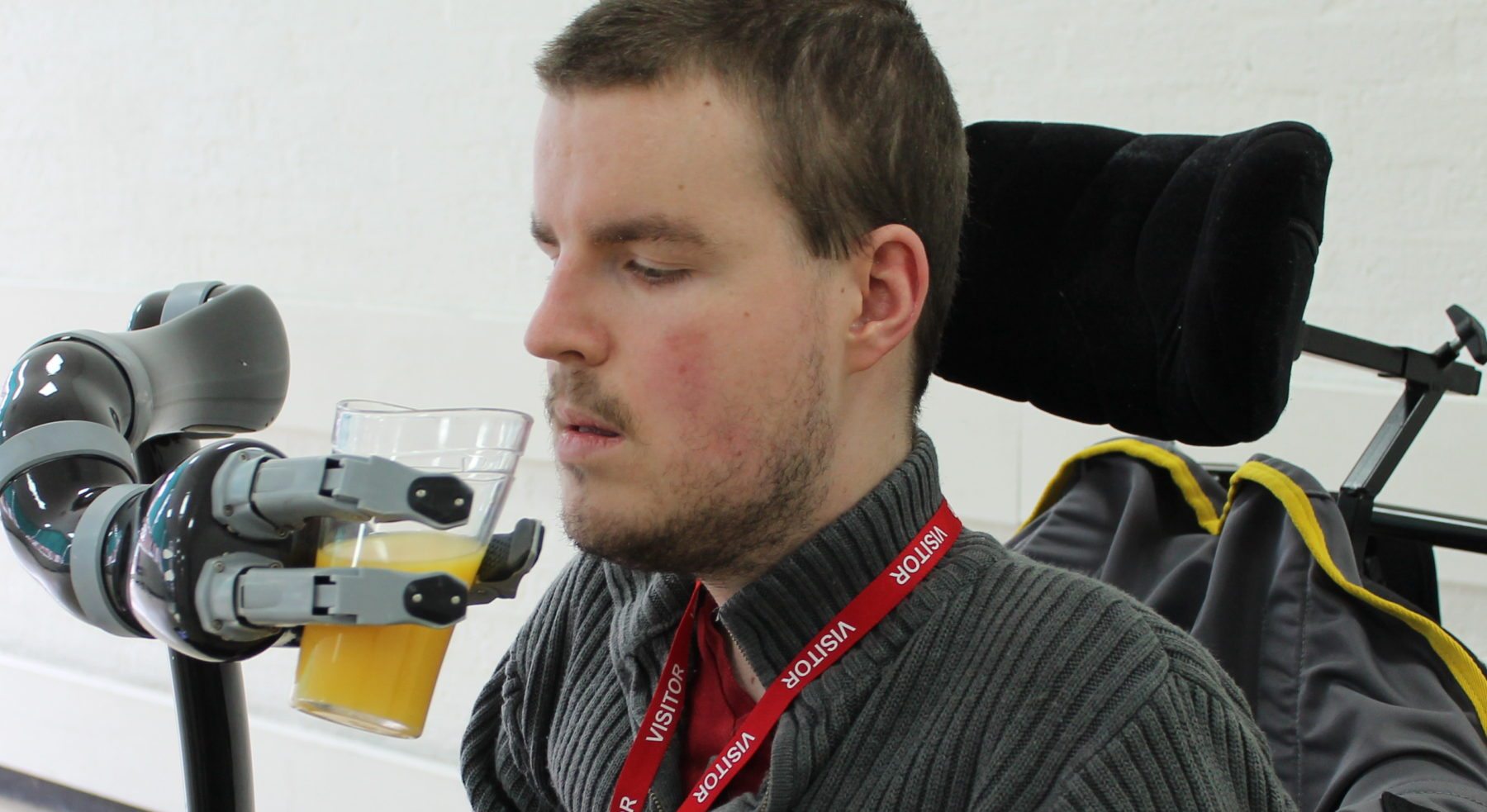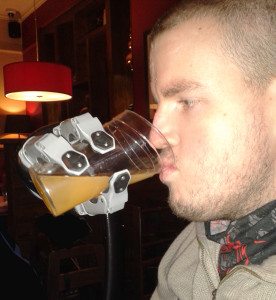Coventry college pioneers assistive robotics in the UK
Performing everyday tasks was once thought to be impossible for Jon McGeown, an ex-student at Hereward College, Tile Hill. Jon has limited upper body mobility, but at his grandfather’s recent birthday celebrations, he was able to raise a glass in toast with the rest of his family, an achievement made possible by the college’s new JacoTM robotic arm.
The college, located less than 3 miles from campus, caters for all abilities and actively seeks out new technologies which can benefit students. To purchase the arm, Hereward was supported by charitable funding from Npower. The assistive arm is the only one of its kind to be used in the UK and marks the first steps towards independent living for students like Jon.
Weighing in at a tiny 5.7 kg, the arm, designed by Kinova Robotics, can be easily installed onto a power wheelchair or table. It has a strong carbon-fibre structure and can lift a variety of everyday objects without affecting the stability of the chair. When attached, the arm is powered by the wheelchair’s battery and consumes about the same energy as a light bulb. Unlike a human hand, the robotic arm contains just three fingers. With these three appendages, the JacoTM limb can grab hold of glasses, push buttons and even open a desk draw. Through this multitude of actions, the arm brings a newfound freedom to individuals with upper body disability.
Paul Doyle, Hereward’s ACCESS centre manager says “it’s not just about the practicalities of picking up a glass but being able to participate in a cultural tradition with family and friends, not just about picking up a phone but communicating with others on your terms”
And upper-body disability isn’t the only impairment set to benefit from innovations in robotics technology. Last year HAL, the Hybrid Assistive Limb, was approved for sale in Germany. Designed by the Japanese robotics firm Cyberdyne, HAL is a robotic exoskeleton which helps disabled people to walk by responding to signals from the wearer’s brain. It has an operating time of almost three hours and could change what it means to be diagnosed with paralysis.
Investigating paralysis is an area of research growing in interest. Involving both robotics and neuroscience, the search for a method to restore motor function to paralysed individuals could receive a massive boost in the near future. As announced last week, paralysis is one of the six challenges shortlisted for the Longitude Prize 2014. The prize will award £10million to anyone that can solve the scientific challenge voted for by the public as “the greatest issue of our time”. If the public choose paralysis as the subject of the prize, significant advances will soon be seen within the field.
However, one of the main issues facing robotics technology is the high cost of the equipment. Although the technology is out there, many of the people who need it most cannot afford the price tag. “Robotics is starting to mainstream, but they will only start helping people when they’re truly cost effective,” says Doyle. This is why the robotic arm at Hereward is so important. By providing students with state-of-the-art equipment which would not be accessible otherwise, the college is helping modern technology realise its potential and fulfil the role it was designed for.
In the future, an increase in robotics research may bring down the cost of bionic equipment. Until then, it is institutions like Hereward College which are leading the way in providing assistive technologies, enabling people with disabilities to enjoy a freedom of movement we all take for granted.


Comments